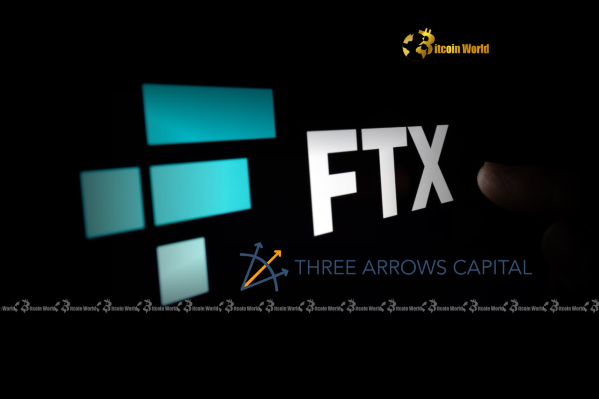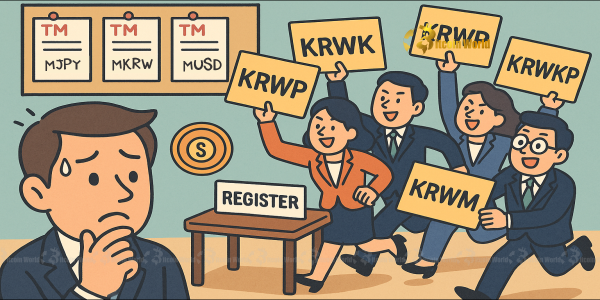BitcoinWorld

FTX Slams 3AC’s Shocking $1.53B Claim as Baseless
The saga of collapsed crypto giants continues to unfold in courtrooms. This time, it’s the defunct exchange FTX pushing back hard against a massive claim from fellow fallen firm, Three Arrows Capital (3AC). At the heart of the dispute is a staggering $1.53 billion claim filed by 3AC against the FTX estate. FTX’s stance? It’s completely unfounded.
Why is FTX Calling 3AC’s $1.53 Billion Claim Baseless?
According to reports from The Block, FTX has formally objected to the hefty claim lodged by the liquidators of Three Arrows Capital in a Delaware bankruptcy court. 3AC initially sought a much smaller $120 million, but dramatically increased this to $1.53 billion in November 2024. They attributed the jump to what they claim is newly discovered evidence related to asset liquidations carried out by FTX.
FTX’s legal team isn’t buying it. Their core argument is straightforward: 3AC’s significant losses were a direct result of its own highly leveraged and risky trading strategies and, critically, its failure to meet margin requirements on FTX’s platform. They argue that FTX’s actions were not misconduct but necessary steps taken under their agreement with 3AC to mitigate losses when 3AC defaulted.
The Events Leading to the Dispute: A Look Back at 3AC’s Collapse
To understand the genesis of this conflict, we need to rewind to the turbulent crypto market conditions of mid-2022. This period saw the implosion of the Terra (LUNA) ecosystem, which sent shockwaves across the industry and triggered a liquidity crisis for many firms, including Three Arrows Capital. 3AC, known for its aggressive leverage, was particularly vulnerable.
FTX details that in June 2022, following the Terra crash, 3AC’s account on their platform fell below the required margin threshold, specifically dropping below $240 million. At this point, FTX initiated outreach to 3AC, requesting they add funds to meet the margin call. However, instead of injecting capital, 3AC reportedly ignored FTX’s communications and, even more critically from FTX’s perspective, withdrew $18 million in Ethereum (ETH) from their account.
This failure to meet the margin call and the subsequent withdrawal prompted FTX to liquidate 3AC’s account. FTX states they recovered $82 million through this process. FTX maintains this liquidation was permissible under the terms agreed upon with 3AC and was a necessary action to prevent further losses for the exchange and its other users.
3AC’s Position: Newly Uncovered Evidence?
While FTX paints a picture of a straightforward margin call default, 3AC‘s decision to drastically increase their claim suggests a different interpretation of events. Their filing in November 2024, citing ‘newly uncovered evidence,’ implies they believe FTX’s liquidation process itself, or other actions taken by FTX, contributed to their losses beyond what was justified by their trading positions. The nature of this ‘new evidence’ is not fully detailed in the initial report but will likely be central to their arguments in court.
It’s possible 3AC might argue that the liquidation was handled improperly, executed at unfavorable prices, or that FTX owed them assets or value that wasn’t accounted for during the process. Given the complex and often opaque nature of crypto trading platforms and liquidations, dissecting these claims requires deep analysis of trading records, platform rules, and communications between the parties.
The Stakes: Impact on FTX Creditors
This dispute has significant implications, particularly for the many individuals and institutions who are FTX creditors. The FTX bankruptcy estate is tasked with recovering assets to repay those who lost funds when the exchange collapsed. Every large claim against the estate, like the one from Three Arrows Capital, potentially reduces the pool of funds available for distribution to legitimate creditors.
FTX’s lawyers explicitly argue that 3AC is attempting to ‘shift the blame’ for its own catastrophic failure onto the FTX estate. They contend that allowing such a claim would be detrimental to the real creditors who are already facing substantial losses. The outcome of this objection will directly affect the total amount of liabilities the FTX estate must account for, thereby influencing the recovery percentage for other creditors.
Here’s a simplified view of the conflict’s impact:
- If 3AC’s claim is accepted (in full or part): Less money available for other FTX creditors.
- If 3AC’s claim is rejected: The FTX estate preserves more assets, potentially increasing the recovery for other creditors.
The court’s decision will be a critical moment in determining the final payout structure for FTX creditors.
What Happens Next in the Court Battle?
The legal process is now in motion. Following FTX’s formal objection, 3AC is required to file a response. The deadline for 3AC’s response is July 11. This response will likely detail their arguments, explain the basis for the $1.53 billion figure, and elaborate on the ‘newly uncovered evidence’ they mentioned.
After 3AC files its response, a hearing is scheduled for August 12 in the Delaware bankruptcy court. During this hearing, both parties will present their arguments to the judge, who will then decide whether to dismiss 3AC’s claim, allow it to proceed (potentially for a different amount), or require further proceedings to determine its validity.
This case highlights the complex and often contentious nature of unwinding large, interconnected crypto failures. The legal battles are as intricate as the financial web that connected these firms.
Key Takeaways from the FTX vs 3AC Dispute
This ongoing legal clash offers several insights:
- Interconnectedness of Failures: The dispute underscores how the failure of one major crypto entity (3AC) can directly impact another (FTX), even in bankruptcy proceedings.
- Importance of Margin Rules: FTX’s defense heavily relies on 3AC’s failure to meet margin calls, highlighting the critical role of risk management and adherence to platform rules.
- Challenges in Crypto Bankruptcy: Valuing claims, tracing assets, and determining liability in the volatile and sometimes undocumented world of crypto trading presents unique challenges for courts and liquidators.
- Impact on Creditor Recovery: The resolution of large inter-estate claims like this one is pivotal for determining the ultimate recovery for ordinary FTX creditors.
The court’s decision will not only settle a major dispute between two collapsed firms but also potentially set precedents for how similar claims are handled in future crypto bankruptcy cases.
Summary: A Critical Juncture for the FTX Estate
FTX’s forceful objection to Three Arrows Capital‘s $1.53 billion claim marks a critical point in the FTX bankruptcy proceedings. FTX argues that 3AC’s own reckless behavior, not any action by the exchange, caused its losses and that the massive claim is an attempt to unfairly extract value from the FTX estate at the expense of legitimate FTX creditors. With 3AC set to respond and a court hearing scheduled for August, the outcome of this dispute will significantly influence the total liabilities of the FTX estate and, consequently, the potential recovery for those who lost funds in the FTX collapse. All eyes will be on the Delaware court as this high-stakes legal battle unfolds.
To learn more about the latest crypto bankruptcy trends and the challenges facing FTX creditors, explore our article on key developments shaping crypto insolvency proceedings.
This post FTX Slams 3AC’s Shocking $1.53B Claim as Baseless first appeared on BitcoinWorld and is written by Editorial Team





